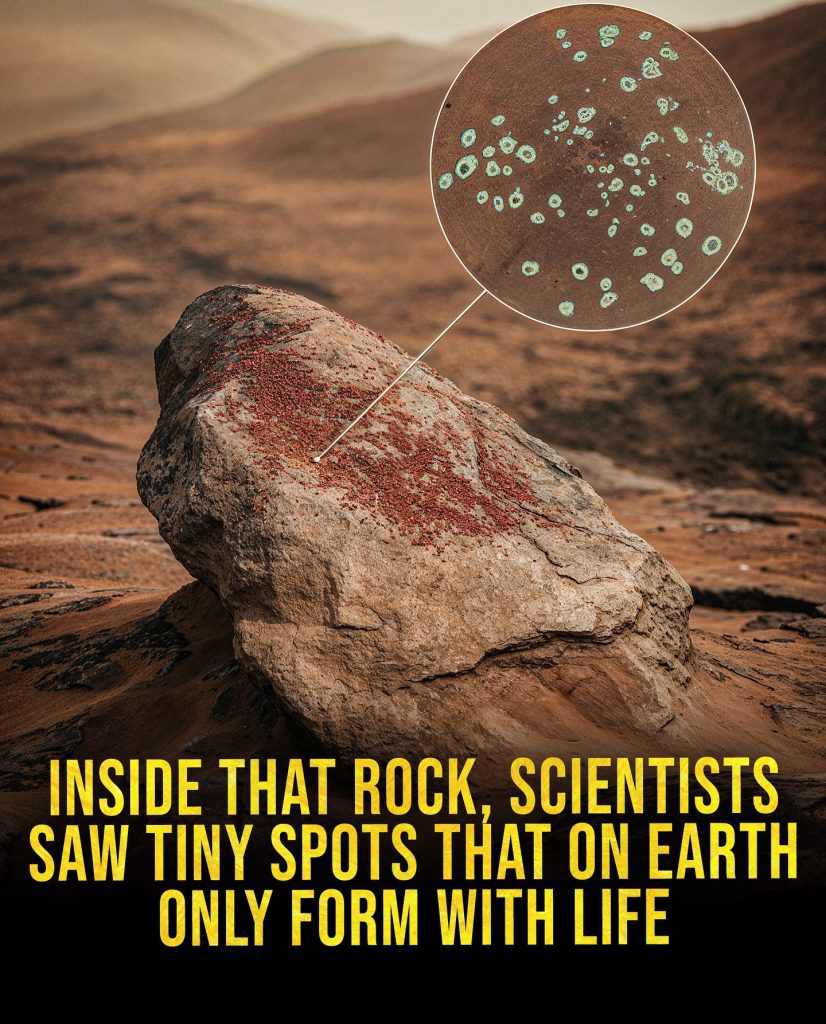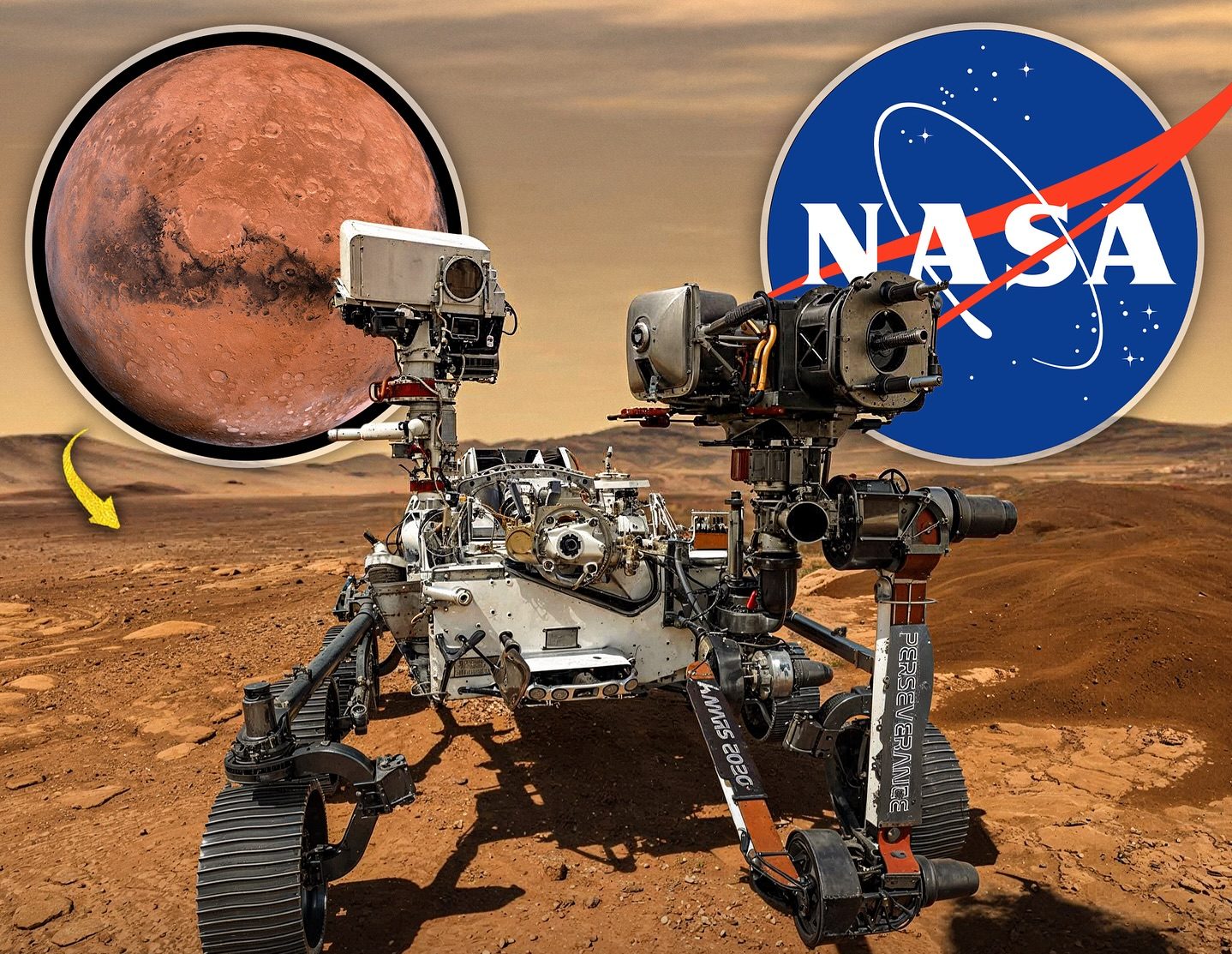NASA Has Found the Strongest Evidence of Life on Mars Yet
NASA Has Found the Strongest Evidence of Life on Mars Yet

For decades, humanity has wondered whether we are alone in the universe. Every mission to Mars, from the early orbiters to today’s sophisticated rovers, has been driven by that haunting question. Now, NASA’s Perseverance rover has uncovered what may be the strongest evidence yet of life beyond Earth.
In Jezero Crater—a basin thought to have once held a river delta billions of years ago—the rover drilled into an ancient rock. What it found inside has stunned scientists: patterns and textures that, on Earth, almost always come from the presence of life.
This discovery doesn’t mean we’ve confirmed Martian life just yet. But it does mean the conversation has shifted. For the first time, we’re staring at a piece of evidence that feels less like speculation and more like a direct whisper from the past.
But There’s No Date or Timeline Yet for When That Will Happen

Excitement around Mars discoveries always runs into one challenge: time. While Perseverance can drill, scan, and capture high-resolution images of Martian rocks, it can’t run the deep, laboratory-level tests needed to confirm signs of life.
That’s why NASA’s ultimate goal has been a Mars Sample Return Mission, a bold plan to bring pieces of the Martian surface back to Earth. But as of today, there’s no set date for when that will happen. NASA is still mapping out the engineering, logistics, and funding needed for such a complex mission.
It’s a frustrating reality. The clues are sitting right there on the Martian surface, locked inside small tubes collected by Perseverance. Yet, until they’re back on Earth, definitive answers remain out of reach. The timeline is uncertain, but the sense of anticipation only grows stronger with every discovery.
Inside That Rock, Scientists Saw Tiny Spots That on Earth Only Form With Life

The real heart of the discovery lies in the details of the rock sample. Under close analysis, Perseverance detected tiny spots and mineral patterns that, on Earth, are almost always tied to microbial activity.
These spots resemble biosignatures—chemical and textural fingerprints left behind by organisms. On Earth, we find them in ancient rocks that once held microbial colonies. The fact that similar formations appear on Mars suggests something extraordinary: billions of years ago, the Red Planet might have supported microscopic life.
It’s important to note that geology can sometimes mimic biology. Certain chemical processes, unrelated to life, can create similar patterns. But the possibility that these structures are true biosignatures has electrified the scientific community. If confirmed, it would be one of the most profound discoveries in human history.
To Confirm, Scientists Need to Study This Rock Back on Earth

Perseverance is equipped with advanced instruments, but there’s a limit to what it can do from millions of miles away. To truly confirm whether these spots were formed by life, scientists need to run tests that require Earth’s laboratories—tools far too delicate and complex to fit on a rover.
The plan is for Perseverance to seal samples in titanium tubes and leave them on the Martian surface. A future mission, possibly involving both NASA and the European Space Agency, would then retrieve those tubes and return them to Earth. Only then could we unleash the full power of modern science—electron microscopes, isotope analysis, and chemical breakdowns that could tell us, once and for all, whether these rocks contain evidence of Martian microbes.
Until that moment, everything we say must be prefaced with caution. But the excitement is real, and the potential is breathtaking.
The Perseverance Rover Found a Potential Biosignature in a Mars Rock

Perseverance has been roaming Jezero Crater since February 2021, tasked with exploring what was once a river delta. This site was chosen precisely because water once flowed there, and where there’s water, the chances of life increase dramatically.
Now, the rover has found what scientists are calling a potential biosignature in one of its drilled samples. This doesn’t mean life has been confirmed, but it does mean we’ve found the kind of clue we’ve been hoping for since the first Viking missions in the 1970s.
A biosignature is not life itself, but it’s the kind of evidence that strongly points in that direction. Combined with the fact that Jezero Crater is over 3 billion years old, the find suggests that if Mars ever had life, this is exactly the kind of place where we would find it.
The discovery of possible signs of life on Mars is more than a scientific milestone—it’s an emotional one. For generations, people have looked at the Red Planet and wondered if it ever held something more than dust and rock. Now, thanks to Perseverance, we may finally be close to an answer.
Yet, patience is required. We live in an age of instant gratification, where answers are expected quickly. Space exploration doesn’t work that way. The journey from drilling a rock on Mars to confirming life in a lab on Earth could take years, even decades. But that’s the nature of exploration—it demands persistence, vision, and a willingness to wait.
One day, when the samples return to Earth and the results are in, humanity may look back at this moment as the turning point. The moment we went from wondering if life exists elsewhere to knowing we were never alone.

